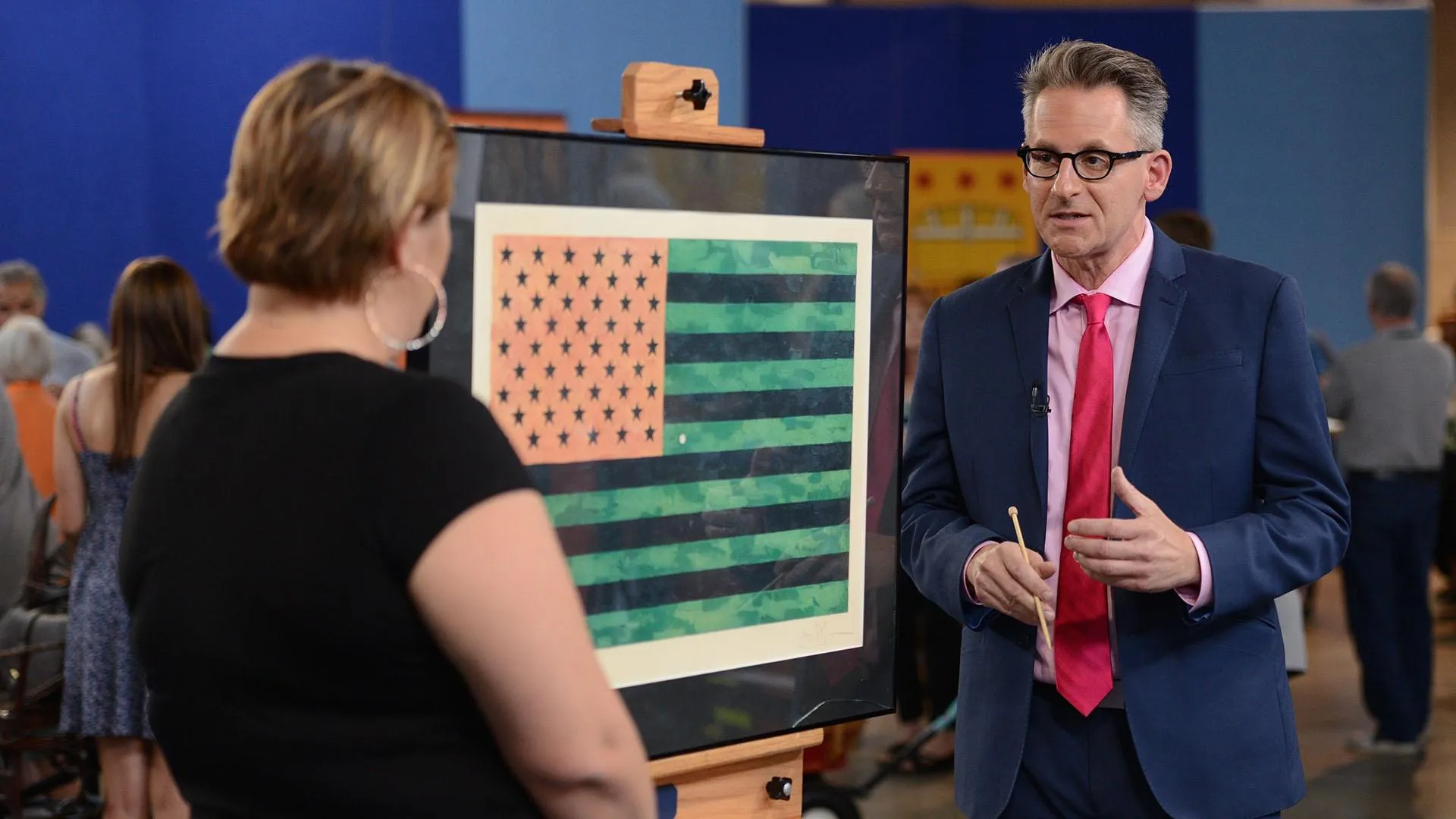GUEST: My five brothers and sisters went up and down the stairs by the clock, you know, a million times a day. My father had a dry goods store in this little town where we grew up, and he sold all kinds of weird things like farm boots, and towels and fabric, but he bought the store from two brothers, and it was a general goods store then where they had groceries. So I'm assuming that's where it came from.
APPRAISER: This clock was made by the Sessions Clock Company in Forestville, Connecticut. A very common clock, it's called a box regulator in the trade in an oak case. Or a regulator no. 2 in the Sessions clock catalogue. More commonly they were without this advertisement at the bottom. It was just a clear glass. And sometimes you would see the word "regulator" across the clear glass. It would sort of dress up the clock, it would... it's not a true regulator by any means. A true regulator would be a clock that would beat one true second with every swing of the pendulum, which would be a true meter long. So this is a little bit more rare because it has the advertising. The glass of it is exceptional, it's in perfect condition, and that's really what drives price in the ad memorabilia market is the subject matter, which is Calumet, and the condition of it. And this is really an exceptional example. It's a time-only timepiece, meaning it only keeps time, it doesn't strike, but it has a 31-day calendar, which is kind of nice with this added complication around the chapter ring. And that's what this red hand is. It indicates what the date is. It's not a compensating mechanism for like February with 28 days, so you do have to readjust it, but it's nice to have that added complication. This clock was made at a time right around the turn of the century, 1900, where everyone baked, and so this company, Calumet, would go to Sessions and say, "We would like to order all these clocks," and they would actually give these to general stores. If this clock was just a clear glass, they made thousands of them. It would be a clock that would sell in the $300 to $400 range at auction today. But in a retail situation, with this advertisement on the glass and the condition that it's in from the dial to all the reverse painting and the subject matter, it's a clock that would sell in a retail situation for $800 to $1,200.
GUEST: Oh, wow. Oh, wow. That's exciting. My brothers and sisters might change their mind about me owning this. (chuckles)
APPRAISER: I hope not.





